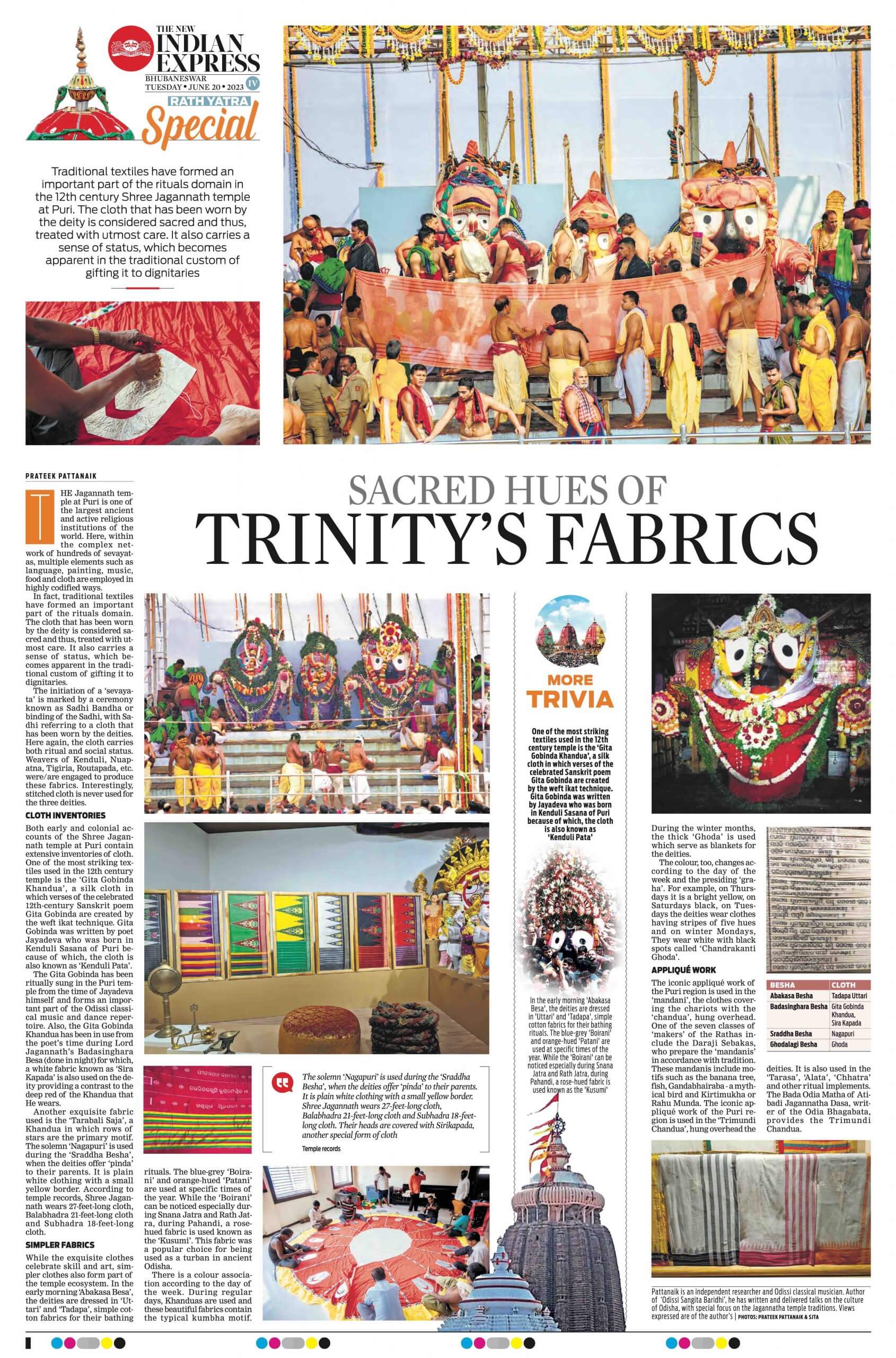Published on 20 June 2023 in Indian Express
The Jagannatha Temple of Puri is one of the largest ancient institutions of the world, still active. Within the complex network of hundreds of sebayatas, multiple elements such as language, painting, music, food and cloth are employed in highly codified ways. As such, traditional textile forms an important part of the ritual domain ; a cloth that has been worn by the deity ‘maharda’ is sacred and thus treated with utmost care. It also carries a sense of status, which becomes apparent in the traditional custom of gifting it to dignitaries. The initiation of a sebayata is marked by a ceremony known as sadhi-bandha ‘binding of the sadhi’, sadhi here referring to a cloth that has been worn by the deities. Here again the cloth carries both ritual and social status. Weavers of Kenduli, Nuapatana, Tigiria, Routapada, etc. were/are engaged to produce these fabrics. Stitched cloth is never used.
Both early and colonial accounts of the Puri temple contain extensive inventories of cloth. One of the most striking textiles used in the temple is the ‘Gitagobinda Khandua’, a silk cloth in which verses of the celebrated 12th-century Sanskrit poem Gitagobinda (written by Jayadeva, born in Kenduli Sasana, Puri – because of which the cloth is also known as ‘Kenduli Pata’) are created by the weft ikat technique. The Odia script is traditionally used, for Sanskrit has no standard script and used to be written in a variety of regional scripts in ancient India. The Gitagobinda has been ritually sung in the Puri temple from the time of Jayadeva himself and forms an important part of the Odissi classical music & dance repertoire ; the Gitagobinda Khandua has also been in use from the poet’s time, in the nighttime Badasinghara Besa, in which a white fabric known as the Sira Kapada provides contrast to the deep red of the Khandua. Another exquisite fabric used is the Tarabali Saja, a Khandua in which ‘rows of stars’ are the primary motif. The solemn Nagapuri is used during the Sraddha Besa, when the deities offer pinda to their parents.
While the exquisite clothes celebrate skill and art, simpler clothes also form part of the temple ecosystem. In the early morning Abakasa Besa, the deities are dressed in Uttari and Tadapa, simple cotton fabrics for their bathing rituals. The blue-grey Boirani and orange-hued Patani are used at specific times of the year. The Boirani can be noticed especially during Snana Jatra and Ratha Jatra. During Pahandi, a rose-hued fabric is prominent, known as the Kusumi. This fabric was a popular choice for a turban in ancient Odisha.
There is a colour association according to the day of the week. During regular days, Khanduas are used. These beautiful fabrics contain the typical kumbha motif. During the winter months, the thick Ghoda is used; these serve as blankets. The colour changes according to the day of the week and the presiding graha. For example, on Thursdays it is a bright yellow ; on Saturdays black ; on Tuesdays consisting of stripes of five hues ; on winter Mondays white with black spots, called Chandrakanti Ghoda.
The iconic applique work of the Puri region is used in the ‘mandani’ the clothes covering the Rathas and the chandua, hung overhead. One of the seven classes of ‘makers’ of the Rathas include the daraji sebakas, who prepare the mandanis in accordance with tradition.
